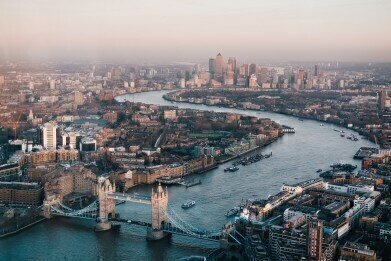Air Clean Up
Is London the Latest 'Smog City'?
Dec 13 2016
As the year draws to a close, it seems as though London’s air pollution problems are coming to a head. Statistics recorded by the London Air Quality Network at King’s College showed that pollution levels were double their normal concentration at the beginning of the month.
This had led to concerns that London – which has long struggled with poor air quality and has breached legal EU limits five years in a row – might be in danger of the becoming the next ‘smog city’, which could have disastrous long-term consequences on the health of its inhabitants.
A poor track record
Even 60-odd years after the passing of the Clean Air Act, improving air quality in London remains a political objective, albeit one that the current government does not seem to be taking very seriously. Since coming into power, the Conservatives have been taken to the Supreme Court by environmental law firm ClientEarth on no fewer than three occasions. They have lost two of the cases, while the third is still ongoing.
However, pollution seemed to spiral out of control at the beginning of the month when low winds and clear skies combined with sub-zero temperatures to allow the pollution to congregate at ground level. The London Air Quality Network takes continual readings of the levels of four different kinds of contaminants – particulate matter 2.5 (PM2.5), particulate matter 10 (PM10), nitrogen dioxide (NO2) and ozone (O3) – to provide an accurate, up-to-the-minute estimation of pollution levels across London.
On the 1st of the month, concentrations of the contaminants reached as high as ten. Normally, they remain between one and three.
Seeing is believing
Indeed, the worrying state of the capital’s airwaves was also captured in images by two city residents at the tail end of November. The two concerned Londoners posted photos to Twitter in which a blanket of black smog was clearly visible over the city.
“On cold days you get a cold layer of air that sits close to the ground and all of our air pollution is put into that layer, therefore the concentration goes up,” explained Dr Gary Fuller at the time, a member of the Environmental Research Group at the College.
“Yesterday was one of those rare moments where air pollution was actually visible; you can’t normally see it like that. Air pollution can seem intangible but there are a few moments when it is made visible and you can see it so clearly.”
Action needed now
Concerned residents and environmentalists have campaigned heavily for reform to the system, with many championing a flexible approach as the key to solving air pollution abatement challenges. While a multifaceted plan is being put into place by newly-appointed mayor Sadiq Khan, the greatest emphasis has been placed on tackling diesel vehicles.
It’s thought that older, more polluting diesel cars and buses could contribute as much 50% of all harmful contaminants in the London air. As a result, Khan has signalled his intention to discourage their use as much as possible in the coming weeks and months.
“Sadiq has proposed the toughest crackdown on polluting vehicles by any major city in the world,” said a spokesperson for the mayor.
“He is also consulting on a new emissions surcharge and introducing an expanded Ultra Low Emission Zone a year earlier than the previous Mayor planned. [This week] he revealed that no more pure diesel double-deck buses will be added to the capital’s fleet from 2018 and that all new single-decks for central London will be zero-emission.”
Events
Nov 26 2024 Paris, France
Nov 27 2024 Istanbul, Turkey
H2O Accadueo International Water Exhibition
Nov 27 2024 Bari, Italy
Biogas Convention & Trade Fair 2024
Nov 27 2024 Hanover, Germany
Dec 11 2024 Shanghai, China







-as-feedstock.jpg)






